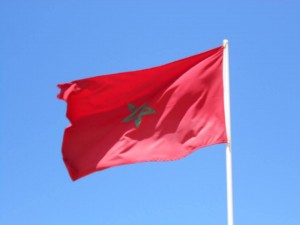
From shorts to burkas, fasting to feasting, opulent to destitute, beaches to deserts, we saw all extremes in Morocco. For our first visit to Africa and our first volunteer trip, this country provided a great mix to experience cultures unlike any we have seen in previous travels.
The project
With Chris’ work policy that allows two paid weeks off for volunteer work, we wanted to best use the time to help in the most impactful way possible. We decided to provide assistance to a developing nation. Since this was our first overseas volunteer experience, we needed expert guidance. After researching our options, we chose to go through UBelong, a non-profit organization based in Washington, D.C., that partners with local non-profits to place international volunteers in positions that will most benefit the unique needs of the country.
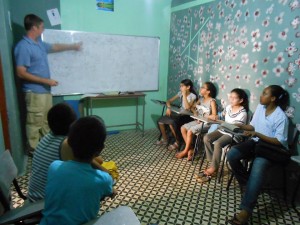
We chose a project that would put our skills to good use. We were to work with children teaching English and social skills. UBelong works with Thaqafat Association, a Moroccan non-profit in Rabat, the capital city, that is establishing a culture of volunteerism in the country. As our program director explained, “volunteerism is a foreign concept in Morocco. You will often hear ‘I don’t understand. Why do you do it?'”
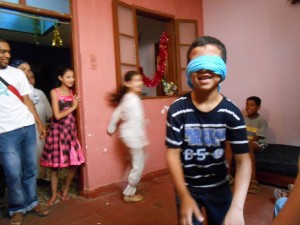
Thaqafat paired us with a budding association in Salé, the neighboring city, that was developing to assist people with mental and physical disabilities. The association hadn’t exactly gotten on its feet, yet, so it was mainly operating as an after-school program for underprivileged children. In a small building in the city center, there were two rooms to teach the younger and older children and a room where ladies made candies they sold in the market places.
We partnered with two other volunteers to teach the children English mainly using pictures and gestures. As Arabic and French are the two main languages of Morocco, it did prove difficult to communicate. Fortunately, our fellow volunteer, Olivia, a student at Rice University, spoke French, and with the older children, we were able to get much across. When it came to the younger children who only knew Arabic, we relied on the association’s guide, a determined young man named Mustapha.
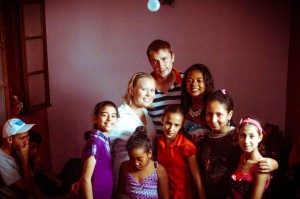
We spent our two weeks in the country teaching the children everything from foods to colors to animals, playing games, and sharing information about ourselves and the U.S. These children were incredibly open to anything we offered to teach and extremely loving. The little boys adored Chris for his soccer-related teaching games, the little girls were thrilled to learn about jewelry, and I don’t think either one of us has ever received so many kisses on our cheeks (the traditional greeting and farewell) than our last day working there. To see and interact with these children who were so open and loving and curious, it truly was a remarkable experience. For a first volunteer assignment, I don’t think we could have chosen a better trip.
The people
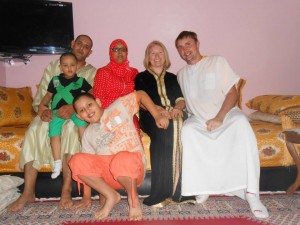
As part of our assignment, we lived with a host family in the medina of Rabat. The medina is the most historic part of the city. A city within the city, the medina is enclosed in barrier walls that were once constructed to protect the ancient city.
Our host family was wonderful. Unlike many other host families, life was made easier for us with a host mother that spoke fluent English. She worked with many associations that taught Arabic and hosted internationals. Our host father took care of the home and the two young sons. We were made to feel welcomed right away and throughout our stay. We dined with the family each evening, and we attended special family dinners at the grandparent’s home.
Overall, the people of Morocco were welcoming. Many times over, random people on the streets would welcome us to their country and thank us for visiting. We were invited to have tea constantly, and people wanted to share information with us about the country.
The politics
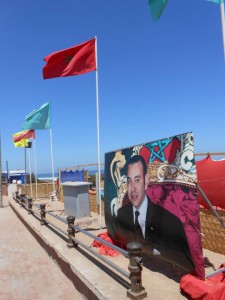
Since the French colonization in the 1950s, the Moroccan government has loosened its religious grip on society. Though Islamic laws are enforced, there is much more freedom today in the constitutional monarchy.
From what we observed, the current leader, King Mohammed VI, is well loved by the majority of the people. Unlike his father and grandfather, he has allowed the people much more leeway in their decisions. As one Moroccan told us, “most of us love our king. We think he is sensible and has been good for Morocco. We just think his powers should be limited. We need a stronger Parliament. Our Parliament is weak, but what we do not want is to have the king overthrown and then have another king and another like Egypt.”
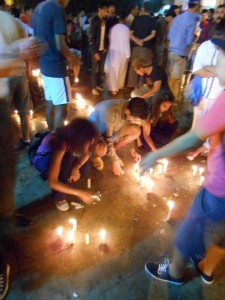
While we were in country, there was a big controversy that erupted. As a favor to the king of Spain, King Mohammed pardoned a group of Spanish prisoners, allowing them to return to Spain. In the group was a convicted pedophile. Unlike his predecessors would have done, the king came out and apologized for the oversight, claiming he didn’t realize this particular prisoner was among the group. We witnessed protests and spirited debates about the topic.
I was quite surprised to see women taking part in these debates. Before our trip, I was nervous about the treatment of women in an Arabic country. To my delightful surprise, I came to realize that women in Morocco enjoy many freedoms. Before the French colonization, women were not allowed to leave the home, go to school or have jobs. Now, women are free to make the choices that will most benefit their lives. During our initial cultural training sessions with Thaqafat, we were even told how the laws in the country are changing to better protect women from assault.
In the old ways, a man could marry as many wives as he chose, with no regard to his other wives’ desires. Today, though polygamy is still lawful but not as popular, the first wife must give her permission before the man can take another wife. Also, where divorce could only have been sought by the husband in the past, now both parties can file for a divorce, and the wife can be entitled to the marital property. Though there is still work to be done on the women’s rights front, steps are being taken in the right direction.
A little known interesting fact, Morocco was the first nation to recognize the newly independent United States of America in 1777. The Treaty of Peace and Friendship, re-negotiated in 1836, between the USA and Morocco is the USA’s longest remaining open treaty.
The fashion
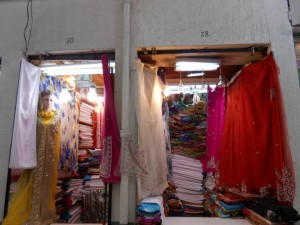
Continuing to be pleasantly surprised, I found all sorts of manner of fashion in Morocco. With the relaxed laws, we saw women in every imaginable clothing combination. From Western short outfits to the full burkas covering face and hands, women were very individualized. As our host mother put it, “If you are Muslim, you know what you should wear. It’s not like Saudi Arabia here.” Our Couchsurfer host in Casablanca also told us women are free to dress as they please, and Muslims are free to look away.
We also saw plenty of counterfeit goods. Many of the young men were dressed in Armani shirts, Tommy Hilfiger jeans and other designer brands. We found shops selling these clothes practically at every corner.
The food
As we were in Morocco during Ramadan, we only were able to enjoy Moroccan cuisine after the sun went down. Well into the night, though, we ate like kings.
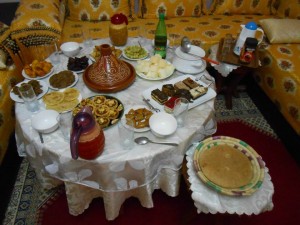
Each evening when the call to prayer was made, we dined with our host family. Our host father created delicious feasts of meatballs, fruits, meat-filled pastries and soups. We always had fresh juices to wash it all down.
When we dined at the grandparent’s house, we enjoyed a traditional meal of roasted chicken and couscous. A national dish of sorts, couscous is made of corn and is most closely relatable to rice. It is usually served topped with various vegetables, and it is quite a heavy meal.
Meals are very communal, and everyone eats out of one cooking dish called a tajine. In Morocco, utensils are little used. Instead, bread is at every meal and you use it to scope up your portion in the tajine.
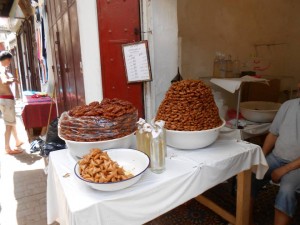
Moroccans are not shy of sugar. Specialty candy is everywhere, and loads of sugar are added to most drinks. One of our fellow volunteers even told us how her host mom added brown sugar as a topping to spaghetti.
Tea, or Moroccan whiskey as it is jokingly referred to, is the social drink. As alcohol is illegal for locals (foreigners can purchase beer in the supermarkets, but you must show your passport), people congregate at cafés to share small cups of tea. As the social climate changes, more women are beginning to frequent cafes, but it can still be seen as taboo. One café Chris and I entered, I was the only woman in the place. Needless to say, I did receive some unpleasant looks throughout the evening.
The sights
With thousands of years of history and a diverse landscape, Morocco makes a rich tourist destination. Below are photos from places we visited in Rabat, Casablanca and Fes.
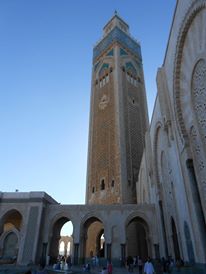
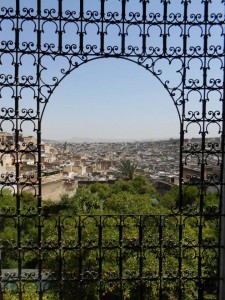
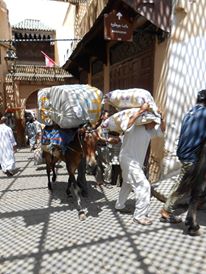
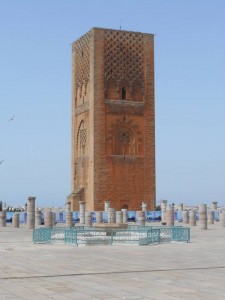
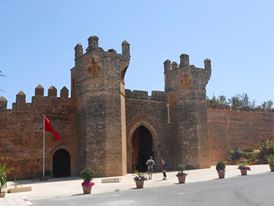
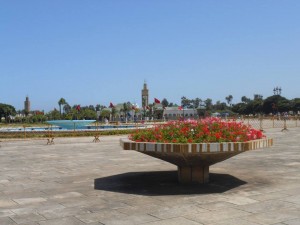
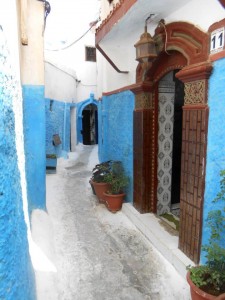
We thoroughly enjoyed our time in Morocco, and we plan to return one day to experience the country outside of Ramadan. This unique and majestical country offers something for all tastes, and we certainly recommend it for other travelers.
-Monica

I felt very happy when I was reading your paragraph,thank you so much Monica and your welcome to our Country every time !
http://vimeo.com/73605534 you can watch this video (souvenir)
Badreddine, thank you for your kind words. We very much enjoyed our time in your country. And, thank you for sharing that beautiful video. What a wonderful summary of Morocco!